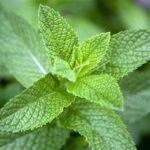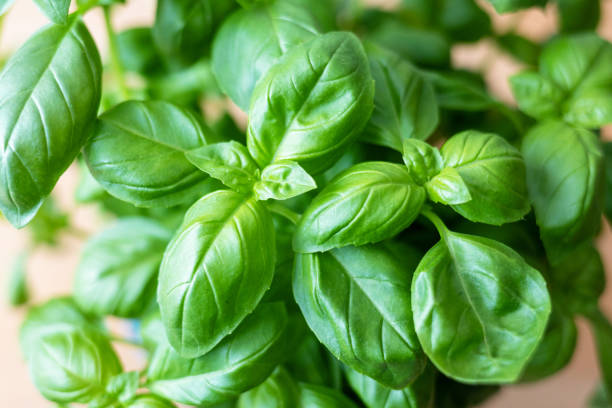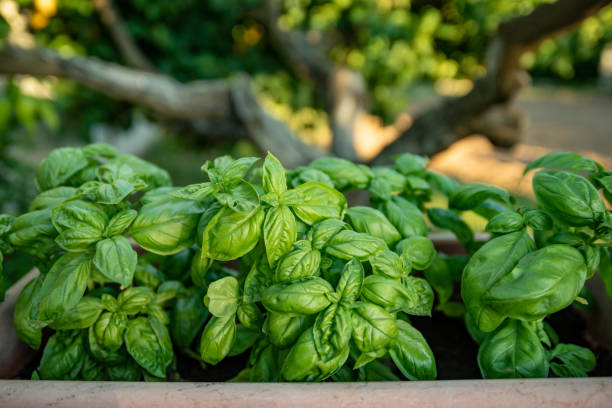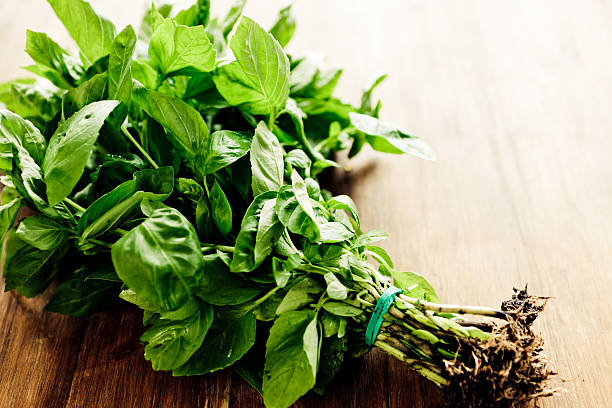Table of Contents
ToggleDifferent Types of Natural Herbs and Their Uses
for the kind information of Different Types of Natural Herbs and Their Uses ,A natural herb is a plant or plant part valued for its medicinal, aromatic, or palatable properties. Unlike pharmaceutical drugs that are synthesized in laboratories, natural herbs are derived directly from nature and have been used in different cultures for centuries. These plants are often used in their whole form, including leaves, flowers, stems, roots, or seeds, and are usually consumed fresh, dried, or as an extract.
The primary appeal of natural herbs lies in their potential health benefits, including promoting overall well-being, preventing and treating diseases, and improving physical and mental health. Common examples of natural herbs include basil, known for its culinary and anti-inflammatory properties; Chamomile, famous for its calming effect and digestive benefits; and Echinacea, popular for its immune-boosting abilities.
Natural herbs can be prepared in many ways, such as teas, tinctures, capsules, or topical applications, depending on their intended use. They are also integral to various traditional medical systems such as Ayurveda and Traditional Chinese Medicine (TCM), where they form the basis of holistic health practices. However, while many herbs are safe and beneficial, it is important to use them correctly, as improper use or excessive consumption can cause adverse effects. It is often recommended to consult with a healthcare professional before using natural herbs for medicinal purposes.
Different Types of Natural Herbs and Their Uses
Culinary Herbs
Culinary herbs are plants used in cooking to add flavor, aroma and color to dishes. They often contain essential oils that enhance the flavor and appeal of food. Here are some common culinary herb descriptions:
Basil (Ocimum basilicum)
Basil, scientifically known as Ocimum basilicum, is a popular herb known for its aromatic leaves and versatile culinary uses. It is a member of the mint family (Lamiaceae) and is native to the tropical regions of Central Africa to Southeast Asia. Basil is often referred to as the “King of Herbs” because of its prominent role in various cuisines around the world.
Culinary use
Basil is found in Mediterranean cuisine, especially Italian dishes. It is usually used fresh but can also be found dried. Some popular culinary apps include:
Pesto: A traditional Italian sauce made with fresh basil leaves, garlic, pine nuts, Parmesan cheese and olive oil.
Salads: Fresh basil leaves add flavor to salads like caprese, which includes tomatoes, mozzarella cheese, and a drizzle of balsamic vinegar.
Pasta and Pizza: Basil is often added to tomato-based sauces and as a topping for pizza.
Soups: It is used in a variety of soups, such as the classic Italian minestrone.
Marinades and Dressings: Basil can be mixed into marinades and salad dressings for added flavor.
Medicinal and health benefits
Tulsi is valued not only for its culinary uses but also for its medicinal properties:
Anti-inflammatory: Basil contains essential oils such as eugenol, citronellol and linalool, which have anti-inflammatory effects.
Antioxidants: The herb is rich in antioxidants, which help fight oxidative stress in the body.
Digestive health: Tulsi helps in digestion and helps in reducing problems like bloating and indigestion.
Stress Relief: The aroma of Tulsi is said to have a calming effect, reducing stress and anxiety.
Medicinal Herbs
Medicinal herbs, such as echinacea, ginger, and turmeric, are plants that are used for their therapeutic properties to prevent and treat a wide range of ailments, promote overall health, and enhance well-being. These herbs have been used for centuries in traditional medical systems around the world, including Ayurveda, Traditional Chinese Medicine, and Native American healing practices. For example, echinacea is commonly used to boost the immune system and shorten the duration of colds and flu, while ginger is famous for its anti-inflammatory and digestive benefits, helping to reduce nausea, improve digestion and ease muscle pain.
1. Echinacea (Echinacea purpurea)-Different Types of Natural Herbs and Their Uses

Echinacea, commonly known as purple coneflower, is a flowering plant native to North America and one of the most popular herbs in traditional and modern herbal medicine. It belongs to the daisy family and is easily recognized by its striking purple petals and spiky central cone. Here is a detailed look at its uses, benefits, and applications:
Uses and benefits
Immune System Support: Echinacea is widely known for its immune-boosting properties. It stimulates the activity of white blood cells, which play an important role in fighting infection. Many people use echinacea supplements to help prevent or reduce the severity and duration of colds and flu.
Anti-inflammatory properties: The plant contains active compounds that have anti-inflammatory effects. It helps reduce inflammation and can be beneficial in treating conditions such as arthritis.
Antioxidant effects: Echinacea is rich in antioxidants, which help fight oxidative stress and protect cells from damage caused by free radicals. It can contribute to overall health and reduce the risk of chronic diseases.
Wound Healing: Traditionally, Echinacea has been used to heal wounds and reduce the risk of infection. It can be applied topically to minor cuts, burns, and insect bites to speed up the healing process.
Mental health: Some studies suggest that echinacea can help reduce anxiety. Its calming effect can be beneficial for people dealing with mild to moderate anxiety.
Applications and forms
Tea and Tincture: Echinacea can be consumed as a tea or tincture, which is a liquid. These forms are commonly used to support the immune system and fight colds.
Capsules and Tablets: For convenience, echinacea is also available in capsule and tablet form, making it easy to incorporate into a daily health routine.
Topical creams and ointments: For wound healing and skin conditions, echinacea can be found in topical formulations.
caution
While echinacea is generally considered safe for most people, some may experience allergic reactions, especially those allergic to plants in the daisy family. It is also advisable to consult a healthcare provider before using echinacea, especially for people with autoimmune disorders, as it can stimulate the immune system.
2. Chamomile (Matricaria chamomilla)
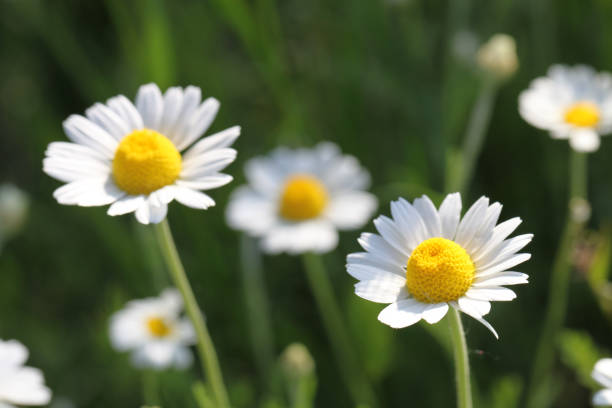
Chamomile, scientifically Matricaria chamomilla (or sometimes known as Matricaria recutita), is a widely recognized herb known for its medicinal and therapeutic properties. Here is a detailed description:
Appearance and Features:
Plant Structure: Chamomile is an annual herb that belongs to the Asteraceae family. It usually grows to a height of 15–60 cm (6–24 in).
Leaves: Chamomile leaves are feathery and divided into thin segments, giving them a delicate appearance. They are bright green and alternate on the stems.
Flowers: Chamomile flowers are the most distinctive feature. They resemble small daisies with white petals surrounding a yellow disk. Each flower is 1 to 2 cm (0.4 to 0.8 in) in diameter.
Aroma: Chamomile flowers have a pleasant, apple-like aroma, which is soothing and calming
Medicinal Uses and Benefits:
Traditional Medicine: Chamomile has a long history of use in traditional medicine, especially in European and Mediterranean cultures.
Digestive Aid: It is commonly used as a digestive aid to reduce indigestion, gas, and bloating.
Anti-inflammatory properties: Chamomile contains compounds that have anti-inflammatory effects, making it useful for soothing skin irritations and treating minor wounds.
Sedative and relaxing: It is known for its calming properties, often used to promote relaxation and reduce stress and anxiety. Chamomile tea, made from the dried flowers, is a popular remedy to promote sleep.
Culinary Uses:
Chamomile flowers can be used fresh or dried to make herbal teas, which are enjoyed for their mild flavor and soothing effects.
Other uses:
Chamomile extracts are used in cosmetic products for their soothing and anti-inflammatory properties.
It is sometimes used as a companion plant in gardens to attract beneficial insects.
Caution:
While generally safe for most people, chamomile can cause allergic reactions in people sensitive to plants in the Asteraceae family (eg ragweed, daisies, marigolds).
Pregnant women and those allergic to chamomile should consult a healthcare professional before using it medicinally.
Overall, chamomile is a versatile herb valued for its medicinal benefits and its pleasant aroma, making it a popular choice in herbal medicine and culinary practices worldwide.
3.Ginseng
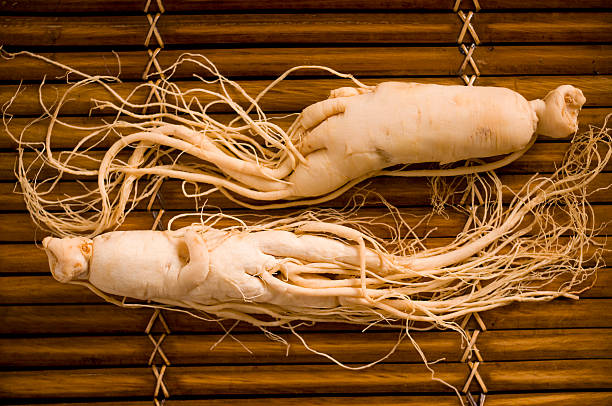
Ginseng refers to several species of perennial plants belonging to the genus Panax within the Araliaceae family. It is renowned for its medicinal properties and has been used in traditional Chinese medicine for centuries. Here’s a detailed description of ginseng:
Appearance and Features:
Plant structure: The ginseng plant has a short, fleshy root and a single stem with many compound leaves that form a rosette.
Leaves: Leaves are palmately compound, usually 5 leaflets.
Flowers and Berries: Ginseng plants produce small clusters of greenish-white flowers in summer, which develop into red berries in autumn.
Medicinal Uses and Benefits:
Adaptogenic Properties: Ginseng is classified as an adaptogen, meaning it helps the body adapt to stress and restore balance.
Energy and Stamina: It is often used to improve stamina, reduce fatigue, and increase energy levels.
Cognitive function: Some studies suggest that ginseng can enhance cognitive function, including memory and concentration.
Immune Support: Ginseng is believed to support the immune system, potentially reducing the risk of infection.
Antioxidant effects: It contains compounds like ginsenosides with antioxidant properties, which protect cells from oxidative stress.
Culinary and other uses:
Herbal Remedies: Ginseng roots are dried and used to prepare teas, extracts, capsules, and other herbal formulations.
Cosmetic products: Ginseng extracts are used in skin care products for their anti-aging and rejuvenating properties.
Culinary Uses: Ginseng root is sometimes used in Asian cuisine, especially in soups and herbal broths.
Cautions and Considerations:
Side effects: Ginseng is generally considered safe when used appropriately, but it can cause side effects such as headaches, insomnia, digestive problems, and changes in blood pressure.
Interactions: It may interact with some medications, including blood thinners, diabetes medications, and stimulants.
Pregnancy and breast-feeding: Consultation with a healthcare provider is recommended before using ginseng during pregnancy or breast-feeding.
Overall, ginseng is a valuable herb known for its potential health benefits, especially in supporting energy, cognitive function, and overall vitality. Its adaptive properties have made it a popular choice in traditional and modern herbal medicine practices worldwide.
Aromatic Herbs
Aromatic herbs are a diverse group of plants valued for their fragrant leaves, flowers, seeds, or roots, which contain essential oils. These herbs are widely used in culinary, medicinal, and cosmetic applications due to their pleasant aroma and various beneficial properties. Here’s an overview of aromatic herbs:
1.Mint (Mentha spp)
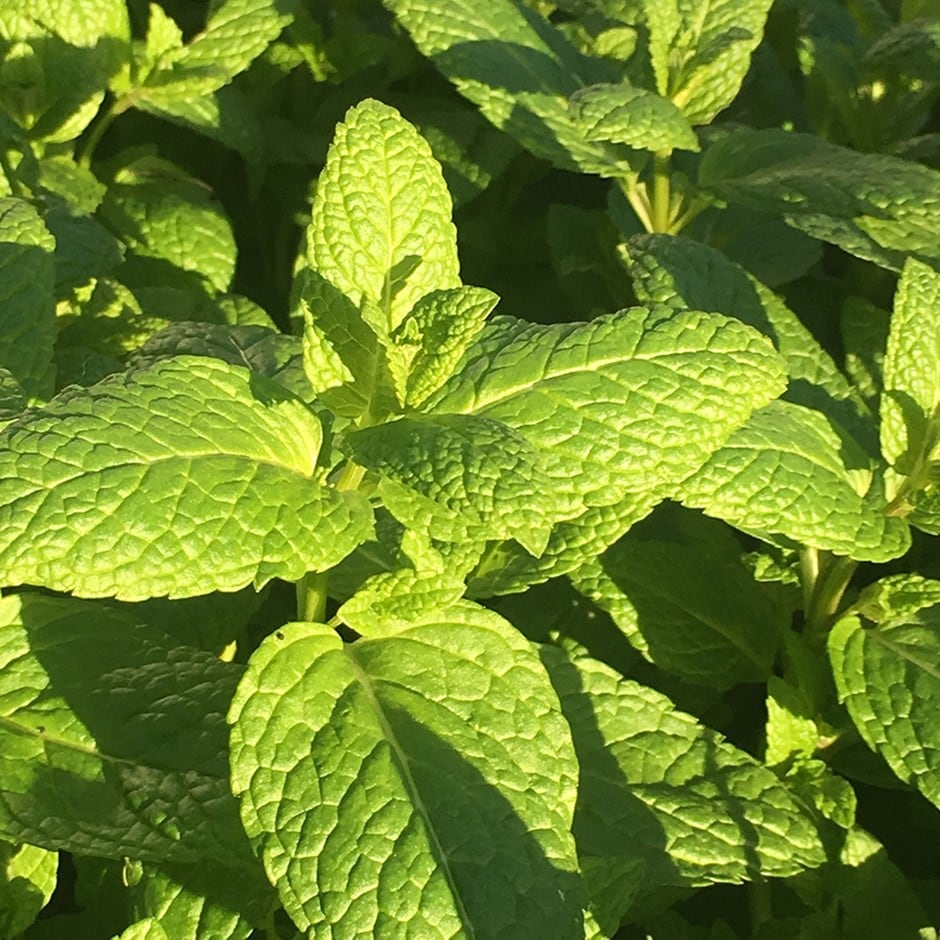
Mint, belonging to the genus Mentha, encompasses a diverse group of aromatic plants known for their refreshing flavor and medicinal properties. There are many varieties of mint, including peppermint (Mentha piperita) and spearmint (Mentha spicata), each offering unique characteristics and benefits: Mint plants typically have square-shaped stems, leaves with serrated edges, and small, clustered flowers. White to purple. They thrive in moist environments and are widely cultivated for their culinary and medicinal uses.
Uses and benefits
Digestive Aid: Peppermint is commonly used to relieve digestive discomfort such as indigestion, gas, and bloating. Its natural compounds help relax the muscles of the digestive tract, promoting smooth digestion.
Breath Freshener: Because of its pleasant smell and antibacterial properties, peppermint is often used to freshen breath. Chewing mint leaves or drinking mint tea can help prevent bad breath.
Relief from nausea: Peppermint, in particular, is known for its ability to reduce nausea and motion sickness. It can be consumed as a tea or as an essential oil.
Headache Relief: The cooling sensation of peppermint helps soothe headaches and migraines. Applying diluted peppermint oil to the temples or inhaling its aroma is relaxing.
Skin Care: Peppermint has antiseptic and anti-inflammatory properties that help soothe irritated skin, reduce itching from insect bites, and provide a cooling effect.
Culinary Uses: Mint is a popular herb in cooking and beverages, adding a refreshing flavor to salads, desserts, teas and cocktails.
Application
Tea: Fresh or dried mint leaves can be steeped in hot water to make mint tea, which can be consumed for its digestive and soothing properties.
Essential Oil: Peppermint essential oil is extracted from the leaves and used topically or aromatically for its therapeutic benefits.
Topical Applications: Peppermint leaves or oils can be applied directly to the skin as an itchy relief or cooling agent.
caution
While generally safe when consumed in moderation, excessive use of peppermint or peppermint oil can cause adverse effects such as heartburn or allergic reactions. People with gastroesophageal reflux disease (GERD) should use caution. Pregnant or breastfeeding women should consult a healthcare provider before using peppermint supplements or essential oils.
2.Rosemary:
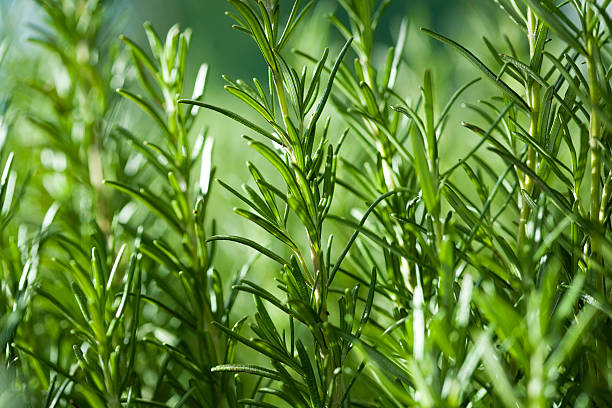
Rosemary (Rosmarinus officinalis) is a versatile herb known for its distinctive aroma, culinary uses and potential health benefits. Here is a detailed description of rosemary and its benefits and various uses:
Benefits and uses:
Culinary Uses:
Seasoning: Rosemary is a key herb in Mediterranean cuisine, where it is used to flavor meat (especially lamb and chicken), fish, potatoes and vegetables.
Infusions: It can be mixed with oil, vinegar and syrup to impart its aromatic taste.
Medicinal properties:
Digestive Aid: Rosemary is traditionally used to improve digestion and ease stomach discomfort.
Antioxidant properties: It contains antioxidants like rosmarinic acid and carnosic acid, which help neutralize free radicals in the body.
Anti-inflammatory: Rosemary may have anti-inflammatory effects, potentially benefiting conditions such as arthritis.
Aromatic and Therapeutic Uses:
Aromatherapy: The scent of rosemary is invigorating and is believed to increase mental clarity, concentration and memory.
Topical Applications: Rosemary essential oil is used in massage oils and skin care products for its soothing and rejuvenating properties
Traditional and Folk Remedies:
Hair Care: Rosemary-infused rinses or oils are used to promote hair growth and improve scalp health.
Respiratory Health: Inhalation of rosemary vapor or tea is believed to support respiratory function and relieve congestion.
Horticultural and ornamental uses:
Rosemary is often grown in gardens for its ornamental value and as a natural insect repellent.
It can be grown in pots or containers and used as an ornamental plant on patios or windowsills.
Cultivation:
Growing Conditions: Rosemary thrives in well-drained soil and prefers full sunlight. It is drought-tolerant once established and is suitable for both garden beds and containers.
Propagation: Rosemary can be propagated from cuttings or seeds and requires minimal maintenance once established.
Symbolism:
Symbol of Remembrance: In various cultures, rosemary is a symbol of remembrance and is often used at weddings, funerals, and other ceremonies to honor loved ones.
In summary, rosemary is not only a culinary herb but also a valuable plant with potential health benefits and versatile uses in cooking, aromatherapy, and traditional medicine. Its aromatic properties, along with its culinary and medicinal properties, make it a beloved herb in households and gardens around the world.
3.Oregano
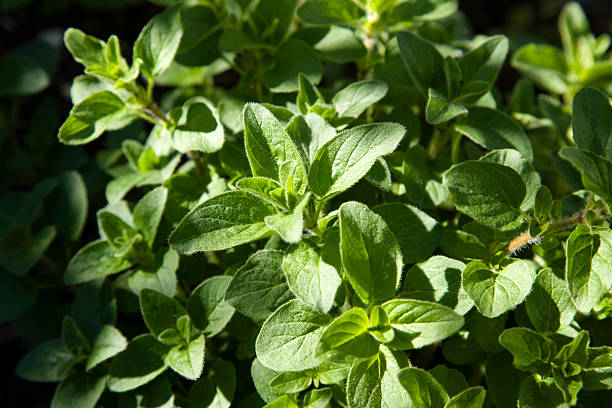
Oregano (Origanum vulgare) is a flavorful herb belonging to the mint family (Lamiaceae), known for its robust taste and numerous health benefits. Here’s a detailed description of oregano along with its benefits:
Benefits and uses:
Culinary Uses:
Seasoning: Oregano is a key herb in Mediterranean and Mexican cuisine, where it is used to flavor tomato-based dishes, meats, vegetables and salads.
Dried herb: It is usually used dried, retains its flavor well, and can be sprinkled directly on dishes or added to marinades and sauces.
Medicinal properties:
Antioxidant Rich: Oregano contains antioxidants like rosmarinic acid and thymol, which help neutralize free radicals and protect cells from damage.
Anti-inflammatory: It has anti-inflammatory properties that can help reduce inflammation and related symptoms.
Antimicrobial: Oregano contains compounds like carvacrol and thymol, which have antimicrobial properties and help fight bacteria and fungi.
Digestive Health:
Oregano has been traditionally used to aid digestion, relieve flatulence and gastrointestinal discomfort.
Respiratory Health:
Inhaling oregano vapor or consuming oregano tea is believed to support respiratory health and reduce cough and cold symptoms.
Antibacterial Properties:
Oregano oil, derived from the leaves, is used in natural remedies and aromatherapy for its antibacterial properties, which can help with immune health and fight infection.
Antifungal Properties:
It has been studied for its potential antifungal properties, making it useful in treating fungal infections and promoting overall skin health.
Cultivation:
Growing conditions: Oregano thrives in well-drained soil and full sunlight. It is drought-tolerant once established and can be grown in garden beds, containers or as a low-maintenance herb in herb gardens.
Propagation: Oregano can be propagated by seed, cuttings, or dividing mature plants. It is a hardy herb that requires minimal care once established.
Culinary Tips:
Fresh vs. Dried: Fresh oregano leaves are milder and more delicate, while dried oregano has a more concentrated flavor. Use fresh leaves as a garnish or add dried oregano early in cooking to release its flavors.
Pairings: Oregano complements tomatoes, garlic, olive oil, and other Mediterranean herbs like basil and thyme.
In short, oregano is valued not only for its culinary versatility but also for its potential health benefits, from antioxidant and anti-inflammatory properties to digestive and respiratory support. Whether fresh or dried, oregano adds a distinct flavor and aroma to a variety of dishes, contributing to overall well-being.
Cosmetic Herbs
Ghee Kumari
– Properties: Aloe Vera (*Aloe Barbadensis*) is a succulent plant known for the thick, gel-like substance found in its leaves. This gel is rich in vitamins, minerals, amino acids and antioxidants.
Benefits:
– Moisturizing: Aloe vera gel hydrates and soothes the skin, making it a popular ingredient in moisturizers, lotions, and facial masks.
– Anti-inflammatory: It helps reduce inflammation and redness, making it beneficial for treating sunburns, minor burns and skin irritations.
– Wound Healing: Aloe Vera promotes wound healing and can be used to soothe cuts, scrapes, and minor wounds.
– Anti-aging: Its antioxidant properties help neutralize free radicals, potentially reducing the appearance of wrinkles and improving skin elasticity.
– Uses: Aloe vera is used in various cosmetic products such as moisturizers, cleansers, sunscreens, and hair care products. It is used in its pure form as a soothing gel or added to DIY skincare recipes.
Calendula
– Properties: Calendula (*Calendula officinalis*), also known as pot marigold, is a flowering plant with bright orange or yellow petals. Its essence is used in skin care for its soothing and healing properties.
-Advantage:
– Skin Soothing: Calendula has anti-inflammatory properties that help calm sensitive or irritated skin.
– Antimicrobial: It has mild antimicrobial effects, making it beneficial for treating minor cuts, insect bites and rashes.
– Healing: Calendula promotes skin healing and regeneration, making it ideal for conditions such as dry, cracked skin and eczema.
– Antioxidant: It contains flavonoids and carotenoids that protect the skin from oxidative damage.
Uses:
Calendula is often used in creams, ointments, balms and baby skin care products. It can be found in formulas for dry skin, diaper rash creams, and wound healing preparations.
Witch Hazel
– Properties: Witch hazel (*Hamamelis virginiana*) is a shrub native to North America. Its extract is a clear liquid with astringent and soothing properties.
Benefits:
– Astringent: Witch hazel tightens skin and reduces pore size, making it a popular toner for oily or acne-prone skin.
– Anti-inflammatory: It helps reduce inflammation and redness, making it useful for soothing razor burns and minor skin irritations.
– Antioxidant: Witch hazel contains tannins that have antioxidant properties, protecting the skin from free radical damage.
– Uses: Witch hazel is commonly used in facial toners, aftershaves, and acne treatment formulas. It can also be used as a base ingredient in DIY skincare recipes.
Tea tree
– Properties: The tea tree (*Melaleuca alternifolia*) is a small tree native to Australia. Its essential oil is distilled from the leaves and has a fresh, medicinal aroma.
– Benefits:
– Antibacterial: Tea tree oil has powerful antibacterial properties, making it effective against acne-causing bacteria.
– Antifungal: It helps treat fungal infections like athlete’s foot and nail fungus.
– Anti-inflammatory: Tea tree oil reduces inflammation and redness, soothing irritated skin conditions such as eczema and psoriasis.
– Antiseptic: It cleans and disinfects minor cuts, scrapes, and insect bites.
– Uses: Tea tree oil is used in skin care products targeting acne, blemishes and oily skin. It is also found in shampoos, conditioners and scalp treatments for its antimicrobial benefits
Each of these cosmetic herbs – aloe vera, calendula, witch hazel and tea tree – offer unique skin care benefits, from soothing and moisturizing properties to antibacterial and anti-inflammatory effects. Widely used in professional skin care products as well as DIY skincare preparations due to their natural and effective properties.
Conclusion
Natural herbs offer a wealth of benefits, from culinary enhancements to medicinal properties. Exploring the diverse types and uses of natural herbs can lead to improved well-being and a deeper connection with nature.


